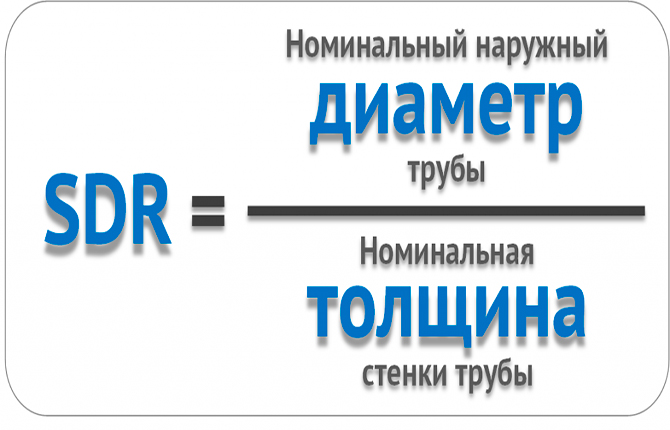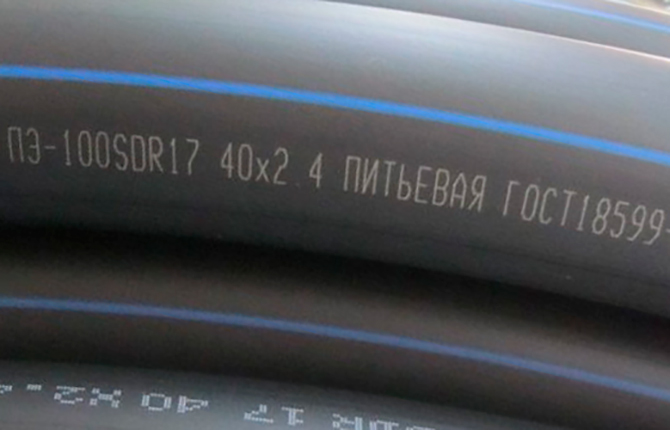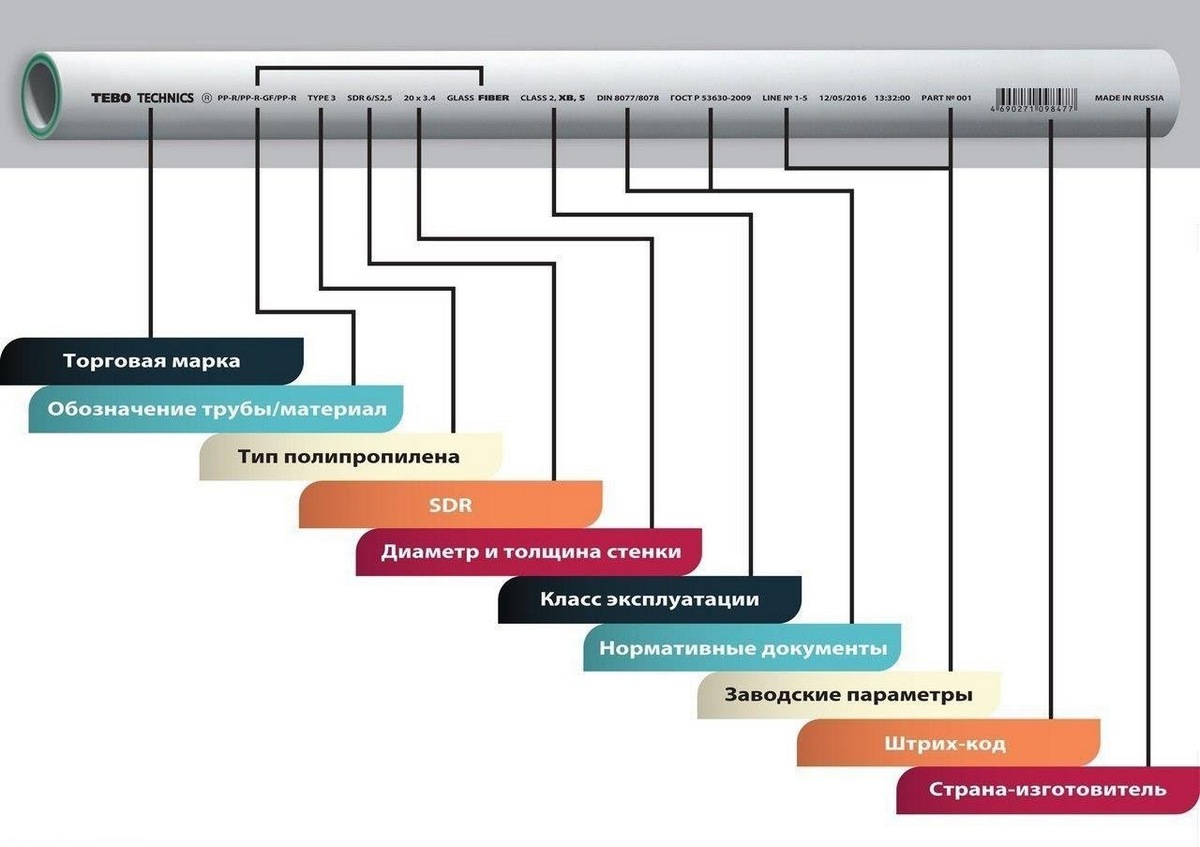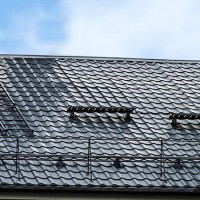What does SDR mean in the marking of polyethylene pipes: formulas and examples
Polyethylene pipes, like all products of this type, are designed for one purpose - to move liquids and gases from one end of the line to the other.Such products have their own specific characteristics. The main part of them is indicated in the technical passport. The marking of polyethylene pipes is a system of markings on the products themselves, which indicate some characteristics, mainly dimensional parameters.
General information
There are two types of marking for polyethylene pipes. In Russian the designation is “PE”. In English – “PE”. There is cross-linked polyethylene marked “PE-X" All products made from this polymer have good technical characteristics:
- Neutrality to chemically active substances. The polymer does not react even with hydrochloric acid. Therefore, pipes made from it are used in many technological processes.
- It does not emit toxic substances or odor, so it does not affect the transported liquids in any way. This is especially important in food production.
- The smooth inner surface of polyethylene pipes ensures that no deposits will form on it.
- Service life - at least 50 years.
- Low specific gravity.
- Easy to process: cutting, drilling, etc.
- Do not corrode.
- They do not conduct electric current.
- Polyethylene pipes with a diameter of up to 160 mm are connected to each other with special fittings without the use of additional equipment. It is necessary for joining pipes of larger diameter.
- A pipeline made of polyethylene pipes can easily be repaired and replaced in individual sections.
- The price is almost two times cheaper than steel analogues.
Polyethylene also has some disadvantages:
- burns;
- poorly resists ultraviolet rays, under the influence of which it becomes fragile;
- large thermal expansion - 10 times greater than that of steel pipes;
- When water freezes inside a polyethylene pipeline, the line ruptures.
Manufacturers offer three types of polyethylene:
- low pressure;
- high pressure;
- stitched.
The latter is a red flexible pipe that is usually used in hot water or heating systems.
Polyethylene pipe products, which are produced at high pressure, have low density and, accordingly, strength. Therefore, they are used in non-pressure pipelines - drainage, gravity sewerage, storm drains, etc. You can also use pressure ones, but only with a thick wall. They are much more expensive. Therefore, products made of low-density polyethylene are installed instead.
The latter, although they have increased strength, are quite fragile. They bend poorly, which often makes installation difficult. And lastly, both options cannot be installed in systems that use hot liquids. At high temperatures, PE pipes melt.
In this regard, the third type of cross-linked polyethylene pipes has several advantages:
- flexible;
- lasting;
- withstands pressure up to 20 atm;
- withstands temperatures up to +95 ℃.
The polymer itself used in production has different densities. And this parameter must be indicated in the product labeling.
There are four densities:
- PE32. Today it is not used in the production of pipe products - it is too fragile.
- PE63. Does not tolerate pressure changes well, under the influence of which it bursts. Used in sewer networks.
- PE80. This polyethylene type is used for laying cold water pipes. If the walls are thick, then they can be laid in a system of production lines.
- PE100. The most durable option, but the heaviest and most expensive.
Labeling Details
Now more specifically about labeling.In the first place is the brand of polyethylene. That is, it is low or high pressure. The designation is: HDPE (HDPE) or LDPE (LDPE).
Next comes an indication of the density, for example, PE100. The following markings are three English letters and a number. For example: SDR11.
SDR is an abbreviation of three English words: standard dimension ratio. It denotes the ratio of the outer diameter of a polyethylene pipe to the thickness of its wall.

The number after the letters indicates this ratio. It usually ranges from 11 to 17. The lower the number, the stronger the pipe material, but the heavier it is. SDR is valid when comparing polyethylene pipes of the same density. For example, you can compare PE80 SDR 11 or 17. You cannot compare PE80 SDR11 and PE100 SDR17.
The next indicator in the marking is the outer diameter and wall thickness. They are written either through “x” or through “*”. For example, 20x2.0. The outer diameter in this case is 20 mm, the wall thickness is 2 mm.
Next in the marking is the designation of the purpose - the pipe line is intended for drinking water. water supply or for technical. That’s what it says on the surface – “drinkable”. This means that such a pipe can be installed on a water supply system in a suburban area.
Latest designations in the markings:
- GOST, according to which polyethylene products were manufactured;
- date of manufacture;
- roll length in meters.
In marking, the sequence is not always maintained exactly this way. Some positions may be reinstalled, which does not change the information content of what is written.
On the building materials market there are polyethylene pipes without markings. It is not recommended to use them anywhere.
Another point concerns the color of the strip that runs along the pipe.If it is blue, then the product is suitable for transportation for water. If yellow - for gas. The marking of polyethylene gas pipes must contain the word “gas”. This is clearly visible in the photo below.

Results
Marking of polyethylene pipes - information that will help you choose the required product with the required technical and operational characteristics. It is not difficult to figure out this information on your own. The main thing is to clearly know why the pipe is being purchased.
Did you know about all these nuances? Write in the comments. Share the article on social networks and save it to your bookmarks.
We also recommend watching selected videos on our topic.
How to choose a high-quality polyethylene pipe - review.
Pipe markings - what do the inscriptions on them say?
Sources:
- https://iseptick.ru/truby-i-fitingi/markirovka-polietilenovyx-trub-sdr11-truba.html
- https://stroychik.ru/strojmaterialy-i-tehnologii/polietilenovye-truby





